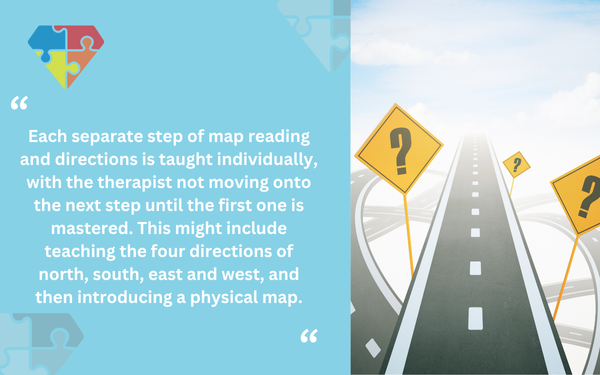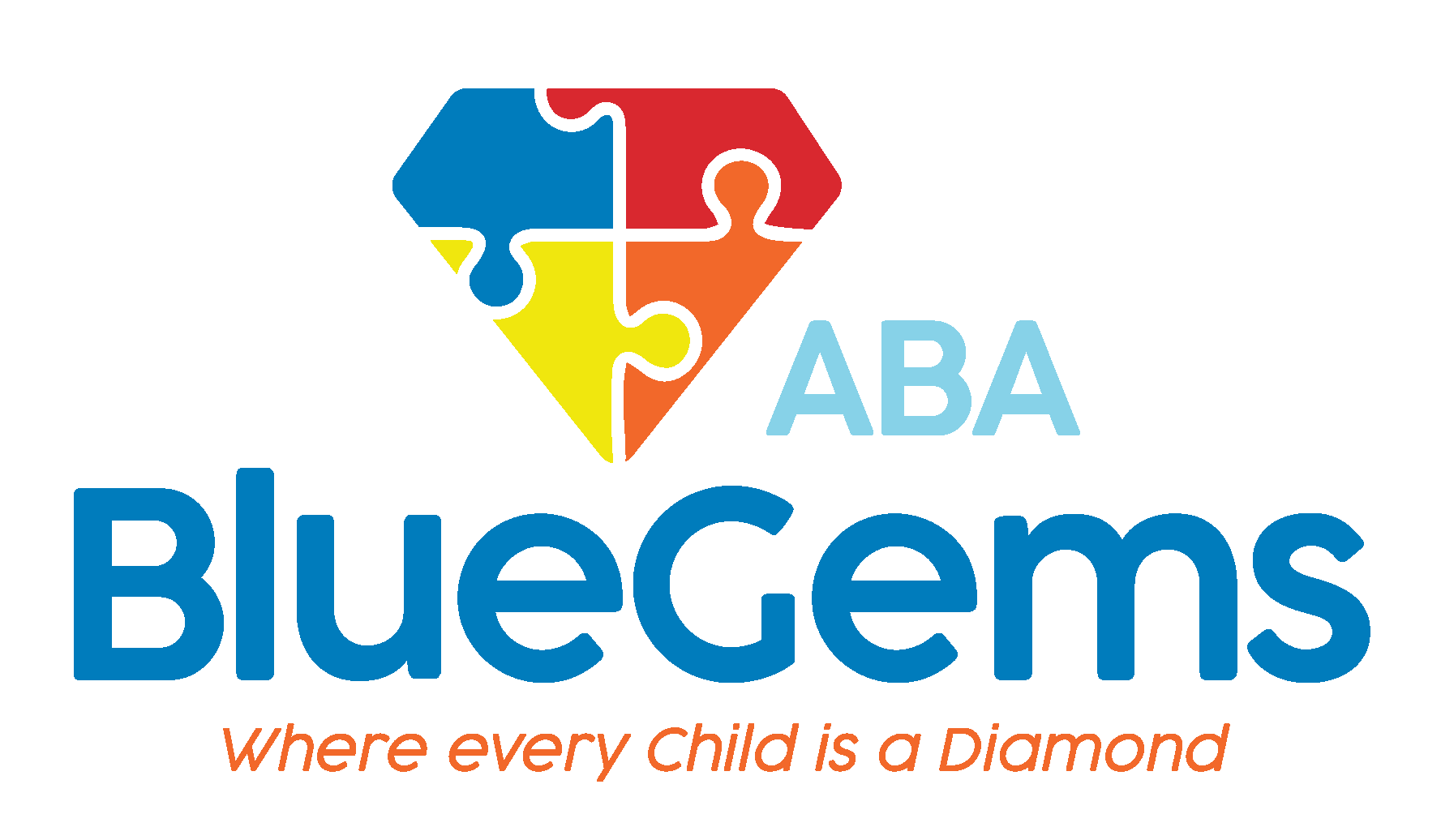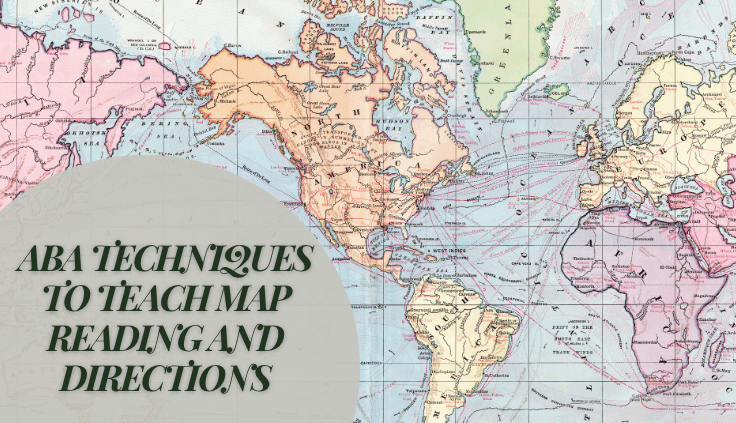ABA Techniques to Teach Map Reading and Directions
Physical maps may not be nearly as important and prominent as they once were, but learning how to read them to navigate directions is still an essential skill. Even though smartphones provide step-by-step visual and spoken directions, there are many other ways in which reading a map and knowing directions can help a person navigate the world.
Map reading and directions are relatively complex tasks, which makes them more challenging to teach to children with autism spectrum disorder (ASD). With the help of targeted and structured approaches through applied behavior analysis (ABA therapy), though, children with autism can learn these important skills.
Below, we’ll discuss some ABA techniques to teach map reading and directions.
Key Takeaways
- Map reading and directional understanding are vital real-world skills.
- ABA techniques like task analysis and DTT make complex tasks manageable for children with ASD.
- Visual supports and prompting systems align with visual learning preferences in ASD.
- Positive reinforcement sustains engagement and progress throughout therapy.
- Familiar environments (e.g., room maps) make learning more relatable and easier to generalize.
Table Of Contents
Task Analysis and Discrete Trial Training
Task analysis and Discrete Trial Training (DTT) are two separate but very similar strategies in ABA therapy. In fact, they often work in conjunction with each other.
Task analysis is the basis of this, and it involves breakdown down complex tasks into smaller and more manageable steps. Approaching teaching this way makes it easier for children with ASD to understand the separate parts of a task, rather than having to put it all together at once.
Each separate step of map reading and directions is taught individually, with the therapist not moving onto the next step until the first one is mastered. This might include teaching the four directions of north, south, east and west, and then introducing a physical map.

DTT, meanwhile, teaches skills in short and controlled trials. This gives children the ability to string together the skills they learned in separate steps through task analysis into a wider skill that can be applied in real life.
| Technique | How It Works | Application to Map Reading |
|---|---|---|
| Task Analysis | Breaks complex skills into manageable steps for easier learning and mastery. | Teach cardinal directions first, then introduce physical maps step-by-step. |
| Discrete Trial Training (DTT) | Uses short, structured teaching trials with repeated reinforcement to build new skills. | Practice direction-following and identifying map elements in brief trials. |
| Prompting & Fading | Begins with therapist guidance that is gradually reduced as the child gains independence. | Start with arrows or gestures; fade as child uses map independently. |
| Visual Supports | Leverages visual learning preferences using pictures, arrows, or symbols. | Use illustrated maps, cue cards, and direction arrows to support learning. |
| Positive Reinforcement | Provides rewards for successful attempts or skill use to maintain motivation. | Reward attempts at locating map items or giving correct directions. |
Prompting and Fading with Visual Supports
A common ABA therapy strategy is called prompting and fading. This is used while teaching new skills or helping children modify behaviors.
It starts with a prompt, which can be anything from a verbal direction, a visual cue, a physical cue such as pointing or even physical guidance. The prompt comes from the therapist and serves as a cue to the child that it’s time to do something — in the case of ABA therapy, to perform whatever skill they’re being taught.
Over time, as the child continues to master the skill, the therapist will gradually remove the prompt, known as fading. This enables the child to gain more independence when they are learning and applying skills.
As children with autism are considered visual thinkers, visual aids are often used in conjunction with the teaching. This could be anything from cue cards with words and/or pictures on them, to arrows pointing in different directions on the map.
Positive Reinforcement
Throughout all strategies of ABA therapy, positive reinforcement will be incorporated. This is a reward that will be given to the child whenever they successfully attempt or complete a desired skill or behavior.
Depending on the child’s preferences and treatment plan, the reward can be extra praise, time with a toy they love or a token that they can exchange for something at a later time.
The positive reinforcement will be done on a schedule to reward the child for their work and to keep them engaged in the therapy and motivated to learn more.
How It Applies to Map Reading and Directions
The above are general ABA therapy strategies for teaching new skills and behaviors. When applying those strategies to map reading and directions, there are a number of things therapists can do to make it more relevant.
First, they can start with an environment that’s familiar to the child. Instead of showing them a map of the country, they can draw a map of a room in their home that they’re familiar with.
This map can include a sketch of the room, with big and familiar objects marked on it. The child can then read the map to locate the items the therapist has drawn, and can even add things to the map that they find.
Through this process, therapists can begin to introduce directions on a compass, either on the room maps and/or through other play-based activities. Map puzzles are a great way to teach general map reading and directions, as they’re a fun way to introduce some of the basic map concepts.
By introducing map reading and directions in these creative ways, the skills are more likely to stick and be relevant to the child, so that it can be easier for them to generalize the skills.
Blue Gems ABA Teaches Children with ASD Practical Life Skills
Learning map reading and directions is still important today, even with the advent of smartphones and their turn-by-turn directions. While children with ASD might have a tougher time learning these skills than their neurotypical peers, basic ABA therapy strategies can help to teach them over time.
At Blue Gems ABA, we teach children on the autism spectrum practical life skills so they can live as independently as possible. We craft all of our ABA therapy treatment plans to cater to the unique strengths, challenges and preferences of each child, which makes them more effective.
To learn more, please contact us today.
Frequently Asked Questions
-
- Q: Can children with ASD learn how to read maps?
A: Yes, with structured ABA strategies like task analysis, children can learn step-by-step.
- Q: Can children with ASD learn how to read maps?
-
- Q: What are good starting points when teaching directions?
A: Begin with basic cardinal directions and a familiar setting, like a room map.
- Q: What are good starting points when teaching directions?
-
- Q: How do you maintain motivation when teaching map skills?
A: Use consistent positive reinforcement like tokens, praise, or preferred items.
- Q: How do you maintain motivation when teaching map skills?
- Q: Are visuals really necessary?
A: Yes, visual supports help ASD learners understand spatial and directional concepts more effectively.




